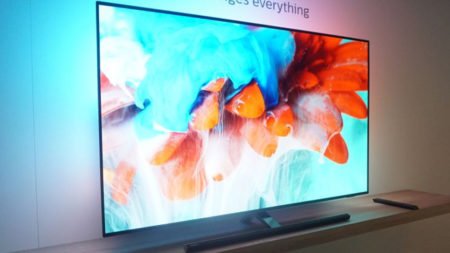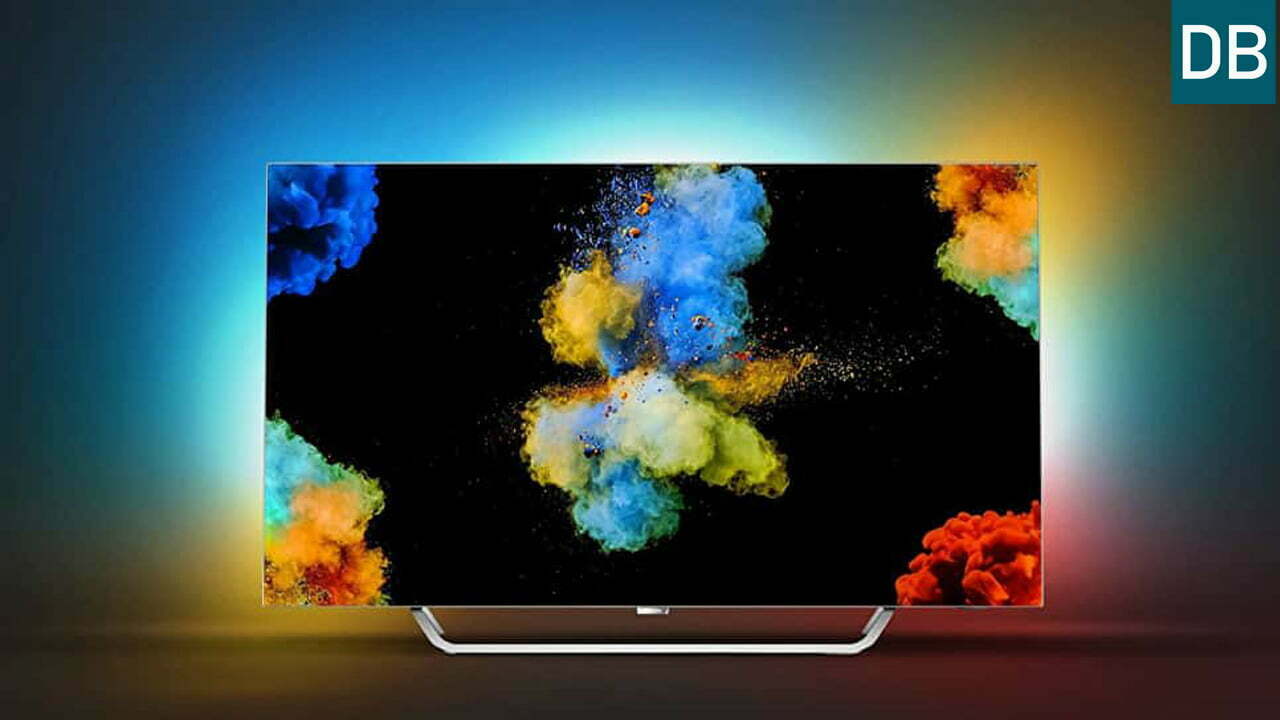So what is OLED technology? Well, OLED stands for Organic Light Emitting Diode and it has become a common TV panel technology in recent years. Now you’ll find it in both OLED TVs and high-end smartphones like the iPhone 11 Pro and Philips OLED 805.
But as though it’s cropping up in lots of places, you might still be struggling to make head or tail of what those four letters really mean for you as a consumer – and whether investing in something with an OLED label on it is worth it in the long-run.
The television market is full of difficult acronyms and some of them are more useful than others. (Oh and don’t get us started on model names. TX-55GZ1500 doesn’t exactly roll off the tongue, does it?)
Although we don’t think you need to get to grips with every acronym, OLED is an important term to familiarise yourself with if you are on the lookout for a new modern technology-based smart TV, or just looking to understand the latest chatter around today’s best smart televisions to buy right now. That’s because a lot of the latest and greatest televisions have OLED panels.
The OLED acronym describes a type of panel used in TVs, including LED-LCD, plasma, or CRT. For a long time, we might have said OLED will be the next big thing in home entertainment – and now it’s well and truly here.
If we compare to most of the LCDs currently on the market – OLED TVs offer better image quality (think blacker blacks and brighter whites), reduced power consumption, and faster response times.
Not everyone has an OLED TV in their home, of course, because of a pretty much price barrier.
OLED FAQ: quick questions answered
- What is OLED? The OLED’s extended form is Organic Light-Emitting Diode.
- Is OLED better than LED? They’re different. OLED has an advantage in some areas, such as contrast, color accuracy, and black levels – though the low brightness might rub you the wrong way.
- Is OLED better than 4K? OLED TV tends to have a crisp 4K screen resolution, but most of the 4K TVs don’t have OLED panels. So pick and choose as you like!
- Is OLED better for my eyes? The LCD screens pass blue lights that directly contact our eyes that occur in our mind to program our brain to keep awake us, but the OLED screen passes half blue light than an LCD screen. You get those benefits in your OLED smartphones too.
- Why is OLED so expensive? It is difficult to produce lights in OLED screens that’s why they are expensive. There’s a lot of models that are affected by the breakage problem.
- What’s the lifespan of an OLED TV? An OLED TV can last you years of use. In the year of 2016, The Korea Times reported that LG OLED TV had a lifespan of over 100,000 hours (11 years of constant use).
- Should I worry about OLED burn-in? Not exactly. You should not worry about the burn-in problem, it’s not harmful that much.
What is OLED, and how is it different?

What is OLED Tv stands for? An OLED extends for Organic Light-Emitting Diode, where “organic” means by a Carbon film that fits before the glass of the screen, inside a panel.
OLED panels start to emitting their own lights whenever an electric current is passed through it. An LCD-LED display requires an external light source to light up their pixels, like a giant backlight.
This backlight separates the LCD screens from their LED variants. An LCD screen has a backlight (called a cold-cathode fluorescent light, or CCFL) which is uniform across the entire backside of the screen.
This means, whether the image is black or white, it is being lit by exactly the same brightness around the panel. This reduces the hotspots, or areas of bright lights because the actual light source illuminating them is uniform.
This all started a few years back when engineers at companies like Samsung and Sony introduced an array of LEDs as a backlight, which means if a part of the screen was black then those LEDs behind that portion should be turned off to make it appear more black.
Since there’s a light inside the panel that produces pixel colors behind the LCD, rather than lightening the LCD screen layer itself, this makes front layers to be less in-sync for the illumination process. The whole process’s result is said “Blooming Effect”.
This is what differentiates OLEDs from an LCD/LED screen display. In OLED TV screens usually, the pixels produce their lights themselves, and whenever it has to produce black it turns off completely itself.
What are the advantages of OLED?

The result will some remarkably dark blacks in an image, and whenever you combine this with the bright whites of an OLED panel.
Both LG and Panasonic are well known for consistent producer of OLED TVs who is likely to use “Infinite Contrast” in their screens that define how black color pixels are completely turned off by self-lightening pixels while producing black colors on screen. This procedure makes pixels give absolute black instead of relative black.
There should be a concern about the longevity of OLED panels?
LG is well known for its investment of billions for the OLED screens as they develop more quality products, but nowadays Sony is coming to the game they are quite serious about OLED televisions that’s why the market has become so expensive. The opened factories are not likely to drop the price of any televisions.
The OLED panel’s lowest refresh rate is 0.001ms, that makes it 1000 times faster than a standard LED-backlit LCD panel.
That’s why OLED TVs have deep blacks and most brights, and also have improved color accuracy with smooth responsive motion, these all are possible just because of a few millimeters and much lighter weight than a standard TV.
Which OLED TVs are out now?
OLED TV has been on the market since 2012, and that’s why manufacturers have tackled the technology over the past few years.
The Panasonic 2020 TV line-up includes the high-end Panasonic HZ2000 OLED, while more mid-range OLED sets like the Philips 855 OLED 754 continue to perform well in our tests.
How much do OLED TVs cost?
OLED TVs are getting cheaper day by day, but they’re still a long way from what we’d call affordable. The starting prices of LG OLED televisions were Rs. 1,17,624.80 in India, $1,600 in the US, and £1,500 in the UK.
But Panasonic’s OLED televisions are still more expensive. The increasing competition of the television market, helping to decrease the prices.
As we know, the whole world is facing the Corona Pandemic, this made the market getting more expensive that’s why it is a bit expensive than before, the price could be different in different countries.
Prices of some OLED televisions:
| OLED TV | PRICES |
| Sony KD-65A8G 65 inch OLED 4K TV | Rs. 231,760 / $3154 |
| Sony KD-55A8G 55 inch OLED 4K TV | Rs. 158,090 / $2151 |
| Sony BRAVIA KD-55A8F 55 inch OLED 4K TV | Rs. 164,999 / $2245 |
| LG OLED65C9PTA 65 inch OLED 4K TV | Rs. 217,090 / $2954 |
Do I need to worry about OLED burn-in?
You don’t need to worry, as it largely happens only when displaying a static image or sequence on repeat, as with a display unit in a showroom or retail store. You should get several year’s warranties, anyhow, and we don’t see many home cinema fans using their OLED TV in this way.

But if you’re planning on leaving your TV for countless hours at a time – say, to parent the children in your absence then maybe OLED is not the right panel technology for you.
What’s the future for OLED TV?
As we know, OLED is an expensive panel technology.
Definitely, OLED televisions are much better than LCD screens, if you are going to buy a tv for your home, it is much better to invest more and have an OLED tv than an LCD tv. But it is unaffordable for a regular customer as it is expensive than other tv screens.
An Rs. 1,17,624.80 / $1,600 / £1,200 price tag isn’t what we consider as per our budget, but it could be the best deal if it’s price got dropped in the future.
The Samsung is one of several TV makers looking to develop what is called QD-OLED: a new type of OLED panel that uses quantum dot emitters to improve the screen brightness.

